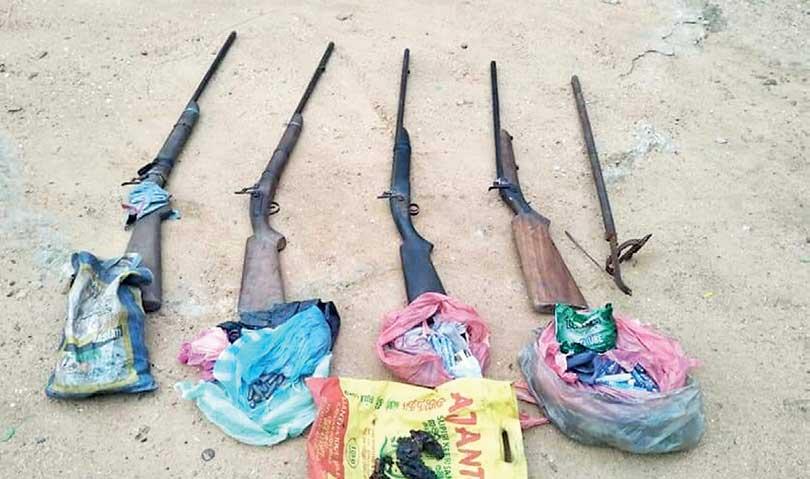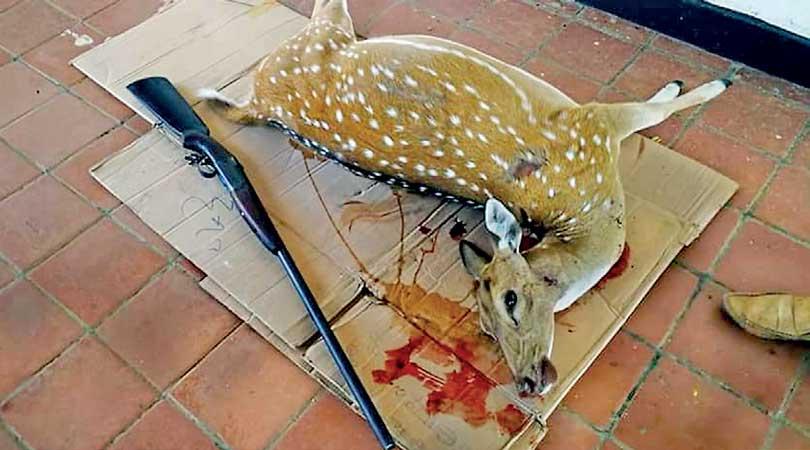05 Oct 2022 - {{hitsCtrl.values.hits}}

On September 16, 2022, a leading newspaper carried an article CITING the Minister of Agriculture, Wildlife and Forest Resources Conservation as alleging that the wild elephant population in Sri Lanka had ‘topped 7,000’. Department of Wildlife Conservation (DWC) officials and elephant researchers immediately issued statements de-bunking this assertion based on the following facts (as stated in the media report):
The only known comprehensive National Wild Elephant Survey in Sri Lanka was undertaken in 2011 and came up with a figure of 5,869.
There have been 1,683 recorded wild elephant deaths in the past five (5) years, on average 337 elephants a year. In 2018, the number exceeded 300 for the first time, and in 2019 this figure ‘topped’ 400.
According to the Centre for Conservation and Research (CCR), there was a 31% increase in deaths compared to those recorded in the decade previous to this, and 92% compared to two decades ago.
As such, one wonders as to the basis on which the Hon. Minister made this allegation, and what the motives were for it?
Sri Lanka has some of the finest researchers in Asian Elephant behaviour and conservation; some with over two decades of active effort in the field. Science and focused knowledge must lead the way, and it was a group of such a knowledge base, of stakeholders from every side of the spectrum, who got together, at Presidential behest, to formulate a National Action Plan to reduce HEC. That was two years ago. Even the finest of plans are just pieces of paper if not acted on
The Nonsense in Numbers
If there is any number that could be challenged, then it would be that of the original survey figure of 2011 as the elephants in some forests in the North and East could not be counted as they had not been cleared of landmines. Yet with no census to the contrary, then it is that figure that is accepted by all in conservation as the basis from which to work. Most importantly, however, there is too much emphasis being placed on the numbers and not on the strategies that need to be adopted to stop the killing – both of elephants and humans. For even if there were just 100 elephants left in the whole country, if their habitat was being encroached on, and their access to food and water deprived, then there would be conflict.The real challenge would be to have plans in place to prevent this, whatever the number of elephants.

In fact, knowledge of the density of elephants in localized areas is needed for management planning rather than the total number of elephants in Sri Lanka. Evidence shows that 15% of elephant habitat has been destroyed over the last 20 years. Logically, if the habitat is lost, there is an inevitable decrease in the species population. However, what is certain is that, at the present rate of attrition, the endangered wild elephant of Sri Lanka is reducing in number and may even be approaching that crucial point where the remnant adult core would not be sufficient to support a viable breeding population for the future. Yet, this too is speculation as with the census, no comprehensive study has been attempted to determine what this crucial figure is.
The Tragedy of Continued Inaction
Of course, numbers are useful, even if based on supposition and not fact, if the ultimate intent is to steal even more elephant habitats, take any pre-determined excess animals into captivity, and drastically reduce their number in the wild. Then, the bigger the claim the better.However, it is dangerous to speculate on an increase in the number as it will justify the further illegal killing of elephants in the minds of the public affected by HEC. As it is, Sri Lanka has the highest number of elephant killings, as a result of the conflict,among all Asian Elephant Range States. So politicians and bureaucrats should refrain from speculation that could further endanger their continued survival in Sri Lanka.
Sri Lanka has some of the finest researchers in Asian Elephant behaviour and conservation; some with over two decades of active effort in the field. Lauded and consulted by most countries who have the blessing of hosting wild elephants, they are those proverbial ‘prophets who are not accepted in their own country’. Science and focused knowledge must lead the way, and it was a group of such a knowledge base, of stakeholders from every side of the spectrum, who got together, at Presidential behest, to formulate a National Action Plan to reduce HEC. That was two years ago. Even the finest of plans are just pieces of paper if not acted on. And so it is with this Plan, a substantial and comprehensive work that could bring an end to most elephant and human deaths, and ensure the continued survival of this iconic and endangered creature for the future health and wealth of the country.
During a visit to an institute under the purview of the Ministry of Agriculture, this same Minister stated that if the strategies implemented for Human-Wildlife Conflict by his Ministry and the DWC fail, then farmers will be issued with firearms to take matters into their own hands...
An intent to kill
During a visit to an institute under the purview of the Ministry of Agriculture, this same Minister stated that if the strategies implemented for Human-Wildlife Conflict by his Ministry and the DWC fail, then farmers will be issued with firearms to take matters into their own hands (Hiru News, September 28, 2022). Elephants and other wildlife will have to pay, yet again, for statutory ineptitude and failure; including that of entrusting the policies of two conflicting subjects to one person.
Is this what the future holds for the Sri Lankan elephant; exterminated apart from a few corralled specimens in enclosures of varying sizes to act as reminders of what we once had? A keystone species, and an important attraction for overseas visitors, when in the wild, this country will be poorer, in every way, if we let them go. So, do we damn the future?
Activist vehemently opposes the distribution of firearms for farmers to protect themselves from elephants as so many experts have proposed alternate methods of mitigating Human
Elephant Conflict (HEC) which have fallen on deaf ears. Our elephants are a national treasurer and have been forcibly put into a situation to that they fall victim to HEC as their habitats have been encroached by human settlements. The Society urges the Minister to re-open talks with Conservation Organizations and the Expert Panel that was appointed by the previous President Mr. Gotabaya Rajapaksa on the management of the HEC that provided the said President with a HEC mitigation plan.
Rohan Wijesinha and
Dr. Sumith Pilapitiya
( WNPS)
Pix courtesy DWC
23 Nov 2024 11 minute ago
23 Nov 2024 31 minute ago
23 Nov 2024 2 hours ago
23 Nov 2024 2 hours ago
23 Nov 2024 2 hours ago